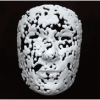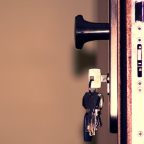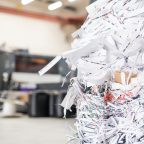
Artists channel their inner CALM through 3D printing
Unique works of art created using specialist equipment at the University of Exeter are on display in an exhibition that showcases the diverse potential of the technology.
The University’s Centre for Additive Layer Manufacturing (CALM) invited 30 professional artists to work with its engineers on its “3D printers”, which build up an object layer by layer.
Dr Sara Flint, commercial manager of CALM, said: “This collaboration was an extremely exciting opportunity for us to work with 30 artists who all had very different creative ideas about how they could use our technology. The results are a striking showcase of its possibilities, and in themselves they’re visually stunning. The artists have gained a new way of working which could benefit them commercially, which is part of our aim. I hope the exhibition will also serve as a platform to highlight our work to a wider audience, and encourage more to find out how we could work with them.”
The Centre’s first collaboration with artists came about when staff from Exeter Phoenix attended an open day for businesses interested in finding out more about how to benefit from the technology.
Curiosity from fellow artists followed, and led to a specialist workshop being developed. Thanks to its success, Phoenix is now hosting Neoreplicants, an entire exhibition dedicated to the results. It launches on 15 November ahead of opening to the public between 16 November and 19 January.
The service was free to the artists involved. Through its funding channels, CALM covered the costs of training, materials, consultation and manufacturing while Phoenix provided the free exhibition space and additional support.
The art works range from architectural structures to representations of the artists’ own blood cells. Some of the artists developed a completely new approach to their practice. One artist, Maia Conran, has been selected to take the concept further by developing a new exhibition in 2013.
She aimed to blur the lines between the virtual and the physical by creating a cinema space within the gallery. She said: “I wasn’t sure what to expect from working with CALM, but the experience has opened the door to a whole new world of possibility and helped me to develop an exciting new body of work. It was inspirational to have access to new ideas and new technologies. The engineers at CALM were extremely helpful and knowledgeable and I thoroughly enjoyed the collaborative process of working with them. I’m delighted with the results, which have led to led to a new commission for a solo exhibition, and I’m already full of ideas for my next project.”
Additive Layer Manufacturing enables complex or bespoke parts to be built quickly, from a range of materials. Products can be built and replicated by using a variety of different sources of data for example computer aided design (CAD), medical imaging or laser scanning.
Since the £2.6 million CALM facility opened last year, it has already benefited scores of businesses in Devon, Dorset, Somerset, Wiltshire and Gloucestershire, by offering access to CALM’s equipment and expertise to create a diverse range of items using the cutting-edge equipment. The products range from ultra-light parts for the aerospace industry and perfect replicas of human body parts to prototypes of toys.
CALM is part-funded by the European Union with £1.5 million from the European Regional Development fund 2007-2013, under the competitiveness operating programme. CALM is partially funded by EADS Innovation Works at Filton, Bristol.
Businesses can find out more about the centre and how they can use its facilities by visiting www.exeter.ac.uk/CALM


















